http://www.rhci-online.net/radiogram/radiogram.htm
https://github.com/GyanD/codexffmpeg/releases/tag/2023-03-05-git-912ac82a3c
set MyFiles=*.flac *.wav *.aif *.mp4 *.mp3 *.mp2 *.aac *.ogg
for %%a in (%MyFiles%) do ffmpeg -i "%%a" -y -lavfi
showspectrumpic=s=1920x1080:color=fiery:gain=.7:fscale=lin:orientation=0:saturation=1:mode=combined:legend=enabled:start=0:stop=8000
"%%~na.jpg"


RSID: <<2023-02-24T00:31Z
MFSK-32 @
9265000+1500>>
Welcome to program 293 of Shortwave Radiogram.
I'm Kim Andrew Elliott in Arlington, Virginia USA.
Here is the lineup for today's program, in MFSK modes as noted:
1:37 MFSK32: Program preview (now)
2:46 MFSK32: TV nature documentaries are good for
the planet
8:10 MFSK64: Was pico balloon shot down over
Yukon?*
13:15 MFSK64: This week's images (featuring owls)*
27:52 MFSK32: Closing announcements
* with image(s)
Please send reception reports to
radiogram@verizon.net
And visit http://swradiogram.net
We're on Twitter now: @SWRadiogram
From Phys.org:
Study suggests watching nature documentaries on TV is good for
the planet
by Oxford University Press
February 16, 2023
A new paper in Annals of Botany indicates that watching nature
documentaries makes people more interested in plants, potentially
provoking an involvement in botany and ecology.
Some 40% of plant species are under threat of extinction. Plants
that are not directly useful to humans are particularly
vulnerable. People often do not recognize how important many
plants are due to a cognitive bias sometimes called "plant
blindness" or "plant awareness disparity." While humans are
generally concerned with endangered animals, threats to plants
are harder to recognize and address. In the United States, for
example, plants receive less than 4% of federal funding for
endangered species, despite comprising 57% of the endangered
species list.
Researchers here noted that in the past, several natural history
productions, including "Planet Earth II," "Blue Planet II,"
"Seven Worlds," and "One Planet" made viewers much more aware of
the animals on the shows. While scientists cannot draw a clear
link between such TV shows and conservation efforts, nature
documentaries provide a direct way to reach mass audiences and
engage them.
Here, the researchers investigated whether nature documentaries
can promote plant awareness, which may ultimately increase
audience engagement with plant conservation programs. They
focused on "Green Planet," a 2022 BBC documentary narrated by Sir
David Attenborough. The show, watched by nearly 5 million people
in the United Kingdom, featured a diversity of plant species,
highlighting vegetation from tropical rainforests, aquatic
environments, seasonal lands, deserts, and urban spaces. The
program also addressed environmental concerns directly, examining
the dangers of invasive monocultures and deforestation.
The researchers measured whether "Green Planet" drove interest in
the plants by exploring people's online behavior around the time
of the broadcast. First, they noted the species that appeared on
the show and the time each one appeared on-screen. Then they
extracted Google Trends and Wikipedia page hits for those same
species before and after the episodes of the documentary aired.
The researchers here found a substantial effect of "Green Planet"
on viewers' awareness and interest in the portrayed plant
species. Some 28.1% of search terms representing plants mentioned
in the BBC documentary had peak popularity in the UK, measured
using Google Trends, the week after the broadcast of the relevant
episode. Wikipedia data showed this as well. Almost a third
(31.3%) of the Wikipedia pages related to plants mentioned in
"Green Planet" showed increased visits the week after the
broadcast. The investigators also note that people were more
likely to do online searches for plants that enjoyed more screen
time on "Green Planet."
"I think that increasing public awareness of plants is essential
and fascinating," said the paper's lead author, Joanna Kacprzyk.
"In this study, we show that nature documentaries can increase
plant awareness among the audience. Our results also suggest that
the viewers found certain plant species particularly captivating.
These plants could be used for promoting plant conservation
efforts and counteracting the alarming loss of plant
biodiversity."
https://phys.org/news/2023-02-nature-documentaries-tv-good-planet.html
Shortwave Radiogram now changes to MFSK64 ...
RSID: <<2023-02-24T00:37Z
MFSK-64 @
9265000+1500>>
This is Shortwave Radiogram in MFSK64
Please send your reception report to
radiogram@verizon.net
From Space.com:
Mystery object shot down over Yukon may have been harmless 'pico
balloon'
By Leonard David
February 17, 2023
The amateur radio community continues to be abuzz about three
recent shootdowns of unidentified flying objects in North
American airspace: one over Alaska, one over the Yukon in
northwestern Canada and another above Lake Huron.
It turns out that the object blasted out of the sky over the
Yukon on Feb. 11 by a U.S. Air Force jet might have been an
amateur radio "pico balloon" — specifically, one called K9YO-15,
which launched from Independence Grove Forest Preserve in
Libertyville, Illinois, north of Chicago.
K9YO-15 was apparently on its seventh circumnavigation of the
globe after being aloft for 123 days.
A small but well-traveled balloon
According to Cary Willis of the Northern Illinois Bottlecap
Balloon Brigade (NIBBB), there are roughly three million amateur
radio operators around the globe. The NIBBB is a subset of this
group, a small cadre of pico balloon enthusiasts.
"Our balloons are very small, 32-inch [81 centimeters] diameter,
100-inch [254 cm] circumference, pre-stretched and carry a
payload of around 10 grams [0.35 ounces] including the tracker,
solar panel and 33-foot [10 meters] antenna wire," Willis told
Inside Outer Space.
The K9YO-15 balloon made use of a silver mylar 32-inch sphere,
which is available for the low price of $13.33.
"Our pico balloon K9YO had been flying for 123 days preparing for
the seventh time around the world when it went missing over
Canada," Willis said. "That wasn't the first time K9YO went
missing. After the fifth time around the world in 77 days, K9YO
went missing for 30 days, reported on the 106th day over Mongolia
and continued the sixth circumnavigation at 112 days."
"I believe our communications with the FBI will help them
identify our project as science in nature."
Missing in action
In a communication with an NIBBB team member, Willis said that
"we should be very proud of the work that we have done, and hope
to continue our project connecting with amateur radio stations
around the world."
Since pico balloon K9YO-15 has not been heard from for several
days, amateurs are calling it "missing in action." The object was
last reported on Feb. 11 near Hagemeister Island in Alaska.
According to the Pentagon, the object shot down over Canada that
day was a "small metallic balloon with a tethered payload" —
seemingly a match for a pico balloon.
"We don't yet know exactly what these three objects were. But
nothing right now suggests they were related to China's spy
balloon program or that they were surveillance vehicles from any
other country," U.S. President Joe Biden said on Thursday (Feb.
16) during a press briefing that addressed the United States'
response to recent aerial objects.
"We acted out of an abundance of caution," Biden explained, "with
established parameters for determining how to deal with
unidentified aerial objects in U.S. airspace."
Biden said that the intelligence community's current assessment
is that "these three objects were most likely balloons tied to
private companies, recreation or research institutions studying
weather or conducting other scientific research." A range of
entities, including countries, companies, and research
organizations "operate objects at altitudes for purposes that are
not nefarious, including legitimate scientific research," he
added.
'Perfectly safe'
The possible shoot-down of K9YO-15 was an unlucky incident, said
Douglas Malnati, an amateur radio operator who launches pico
balloons.
"Pico balloons are safe. I think once the government has a better
understanding of what they're seeing, they will agree," Malnati
told Inside Outer Space.
"Pico balloons don't spy on anyone, and they're perfectly safe to
be in the sky with aircraft. The FAA [U.S. Federal Aviation
Administration] has guidelines about what can/can't fly, and pico
balloons are well inside the safety threshold, so they don't pose
a danger to aircraft, nor to people on the ground," Malnati said.
The objects are very lightweight, so they don't pose a danger to
people and infrastructure on the ground eeven if they pop and
fall, he added.
"So in total, I suspect the shootdown was a misunderstanding, if
that is what happened," Malnati said. "As far as the future for
pico balloons, hopefully the attention brings more people to the
hobby, and they enjoy it!"
https://www.space.com/mystery-object-shot-down-yukon-amateur-ballloon
Sending Pic:116x203C;

This is Shortwave Radiogram in MFSK64
Please send your reception report to radiogram@verizon.net
On February 12 (Super Bowl Sunday), The Atlantic published Superb
Owl Sunday VII, its annual collection of photos of owls.
Here are some examples. They are all from
https://www.theatlantic.com/photo/2023/02/photos-superb-owl-sunday-vii/673023/
A portrait of a small owl taken in Tokyo, Japan ...
Sending Pic:195x141C;
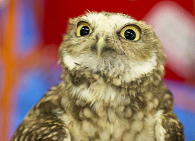
A pair of burrowing owls in Cape Coral, Florida ...
Sending Pic:191x167C;
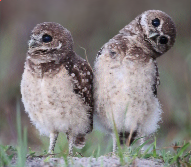
A long-eared owl sits on a tree near Konya, Turkey, February 22
...
Sending Pic:194x170C;
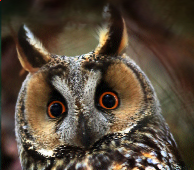
A snowy owl flies low across a stretch of ice ...
Sending Pic:252x91C;

A snowy owl, taking a stroll ...
Sending Pic:195x162C;

A barn owl flies above Swindon, England, February 6 ...
Sending Pic:192x167C;
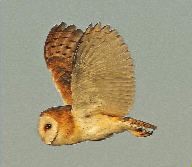
A close view of a white-faced owl ...
Sending Pic:197x176C;
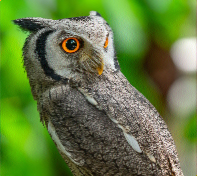
Our painting of the week is "Owl Silhouette Abstract" by Carole
Martindale.
https://t.ly/AmUZk ...
Sending Pic:162x205C;
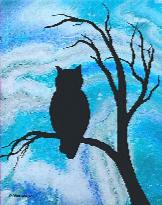
Shortwave Radiogram returns to MFSK32 ...
RSID: <<2023-02-24T00:57Z
MFSK-32 @
9265000+1500>>
This is Shortwave Radiogram in MFSK32 ...
Shortwave Radiogram is transmitted
by:
WRMI, Radio Miami International, wrmi.net
and
WINB Shortwave, winb.com
Please send reception reports to
radiogram@verizon.net
And visit http://swradiogram.net
Twitter:
@SWRadiogram or twitter.com/swradiogram
I'm Kim Elliott. Please join us for the next Shortwave
Radiogram.
https://jadquir.xyz/pages/mra/index.html#about

https://youtu.be/HgVeMJfx-Wg
https://www.theguardian.com/music/2023/feb/12/dennis-lotis-obituary
https://en.wikipedia.org/wiki/Dennis_Lotis

http://www.rhci-online.net/radiogram/radiogram.htm
http://wiki.radioreference.com/index.php/Decoding_the_SW_Radiogram_Broadcasts
https://www.qsl.net/ve7vv/Files/Digital%20Modes.pdf

RSID: <<2023-02-26T23:30Z
MFSK-64 @
5950000+1500>>
Antoine “Fats” Domino Jr. was born February 26, 1928.
He died in 2017.
Sending Pic:194x240;

https://www.fatsdominoofficial.com/
Please report your decode to
themightykbc@gmail.com














